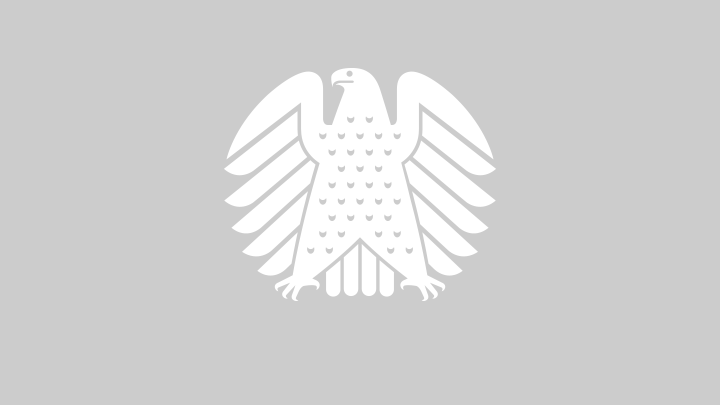The Weimar Republic (1918 - 1933)

Classroom poster on the Weimar Republic: election posters, 1930-32 (SPD, Centre, KPD), colour print. (picture-alliance/akg)
As a result of the November Revolution of 1918, Germany’s constitutional monarchy was replaced by parliamentary democracy. Throughout its entire existence, the Weimar Republic, named after the town where its constitution was adopted, was continuously subjected to internal and external stresses and strains. From the very start, advocates of the Republic had to withstand pressure from radical forces of the Left and Right.
Parliament
The Reichstag, elected for a four-year term, was the central legislative body under the Constitution of the Weimar Republic. Its main functions were legislation, including approval of the budget, and scrutiny of the Reich Government. It organised its work by means of a system of permanent committees. The Chancellor was not elected by Parliament but appointed by the President of the Reich. In the exercise of his office the Chancellor depended on the confidence of the Reichstag. The President of the Reich, directly elected by the people, was vested with extensive powers by the Weimar Constitution so that he would be a counterweight to the Reichstag. Among his powers as head of state were the right to dissolve the Reichstag and the authority, in the event of public safety being endangered, to declare a state of emergency and enact emergency decrees, which had the status of laws. At the very start of the Weimar Republic, the first-past-the-post election system was replaced by proportional representation, and for the first time women were granted the right to vote and to stand as candidates. The voting age, moreover, was lowered from 25 to 20.
The party system
Although a few new political parties were founded, the party system of the Weimar Republic showed a remarkable continuity in relation to the imperial system. The Social Democratic Party of Germany (SPD), with its roots in the labouring classes, was the strongest political force from 1919 to 1932. It provided several Chancellors as well as the first President of the Reich, Friedrich Ebert, who served in that office from 1919 to 1925. However, it frequently found itself on the opposition benches too. The Centre Party (Zentrum) saw its role as the political representative of the interests of the Catholic population. It provided the majority of the Chancellors and was a member of every governing coalition until 1932. The German Democratic Party (DDP), a liberal party of the Centre-Left, known from 1930 onwards as the German State Party (DStP), had a great influence on the shaping of the Weimar Constitution and was also represented in most governments in the period up to 1932.
The SPD, the Centre and the DDP were the unreservedly pro-democracy parties, loyal to the Constitution of the Weimar Republic. While their aggregate share of the vote in the elections to the National Assembly in January 1919 amounted to some 70%, when it came to the first Reichstag elections in June 1920 they lost their parliamentary majority for ever. With the exception of several Grand Coalitions, governments thereafter tended to be minority coalitions of moderate liberal and conservative parties which depended on parliamentary toleration. Virtually all the governments of the Reich during the Weimar period were characterised by chronic instability and short terms of office. The political parties were too deeply rooted in their original social constituencies and, because of the limited scope for the redistribution of wealth, too reluctant to compromise with other parties. Most of the governments of the Reich from 1920 onwards included the centre-right German People’s Party (DVP), which initially regarded the Republic with scepticism. The Bavarian People’s Party (BVP), which had split from the Centre Party in 1918, was also represented in many governing coalitions from 1922 onwards. One development that helped to seal the fate of the Weimar Republic and fuel the rise of the NSDAP was the steady decline of the DDP and the DVP; these two liberal parties had been reduced to splinter groups by the end of the Weimar era.
Adversaries of the Republic
One of the fiercest opponents of the Republic was the German National People’s Party (DNVP). As the representative of the conservative monarchist camp, it fought the democratic system from the outset. The same applied to the Communist Party of Germany (KPD), which sought the establishment of a Socialist soviet dictatorship modelled on that of the USSR. At the start of the 1930s, the nationalist, racist and anti-Semitic National Socialist German Workers’ Party (NSDAP) benefited from the insecurity and social misery that afflicted broad sections of the population during the Great Depression to become the largest party in Parliament in 1932, although it was unable to attain an overall majority.
Presidential cabinets
Following the break-up of the last Grand Coalition in the summer of 1930, governments of the Reich were no longer formed by Parliament but were based on what were known as presidential cabinets. Without a parliamentary majority of their own, they essentially governed with the aid of the President of the Reich, who enacted decrees under the emergency powers granted him by Article 48 of the Weimar Constitution; this marked the start of a creeping process of constitutional change to the detriment of the Reichstag. While the first Chancellor of such a presidential cabinet, Heinrich Brüning of the Centre Party, who held office from 1930 to 1932, still felt committed to democracy, his non-attached successors, Franz von Papen and Kurt von Schleicher, who took office in June 1932 and December 1932 respectively, openly pursued policies designed to put an end to the Weimar Republic. President Paul von Hindenburg, who had been in office since 1925, appointed Adolf Hitler on 30 January 1933 to head another presidential cabinet, whose members were drawn from the NSDAP and the DNVP. By taking this decision, he dealt the final death blow to the sorely beleaguered parliamentary democracy of the Weimar Republic.